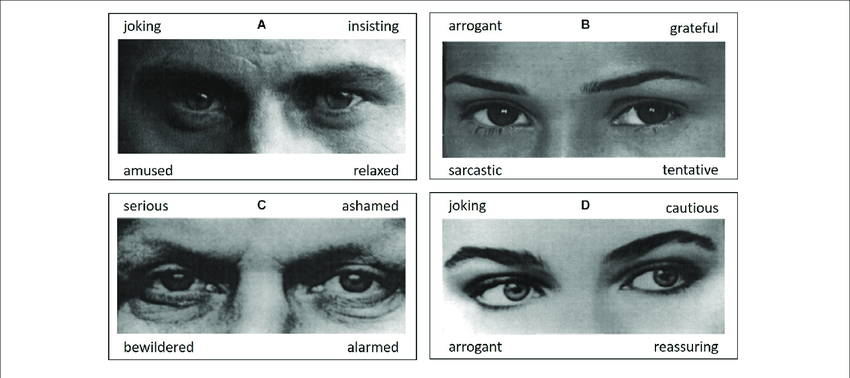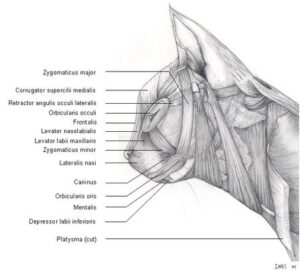 Could there be a link between childhood maltreatment, depression, and emotion recognition?
Could there be a link between childhood maltreatment, depression, and emotion recognition?
Researchers Kristine Kahr Nilsson, et al investigated this question by comparing the emotion decoding abilities of major depressive disorder (MDD) patients with and without a history of childhood maltreatment.
The results of their study suggests that individuals who have experienced childhood maltreatment and suffer from depression tend to have greater difficulty understanding and decoding emotions in others’ faces.
Their findings appeared in their paper entitled “Valence in the eyes: An emotion decoding profile of adults with major depressive disorder and a history of childhood maltreatment” which was published in Clinical Psychology & Psychotherapy.
What is Major Depressive Disorder?
Also known as Clinical Depression, Major Depressive Disorder (MDD) is a common mental health condition that affects millions of people worldwide. In fact, over 8% of adults living in the United States have experienced at least one major depressive episode.
MDD is typically characterized by persistent sadness, low energy, and difficulty finding joy in daily life. It can affect how you feel and your ability to function on a day-to-day basis.
While substantial progress has been made in recent years to understand depression, it’s a complex condition with different variations. Researchers have been exploring various factors that may contribute to depression and its severity, and one area of interest is childhood experiences.
What is Childhood Maltreatment?
Childhood maltreatment encompasses various forms of abuse and neglect that some individuals endure during their early years. These experiences can have lasting effects on mental health and well-being.
Child maltreatment is a global problem with serious life-long consequences. International studies reveal that nearly 3 in 4 children aged 2-4 years regularly suffer physical punishment and/or psychological violence at the hands of parents.
Previous studies such at this meta analysis have also suggested a link between childhood maltreatment and a higher risk of developing depression later in life.
However, not all individuals with depression have experienced childhood maltreatment, and researchers want to understand why some individuals with depression may have more severe symptoms and difficulties in their daily lives.
Study Methodology
For their study, the Danish researchers recruited 342 participants who had been formally diagnosed with MDD by medical professionals and were receiving antidepressant medication.
The participants were asked about their experiences of childhood maltreatment using a questionnaire called the Adverse Childhood Experience Questionnaire (ACE-Q). This questionnaire included questions about different types of maltreatment, such as emotional, physical, and sexual abuse, as well as emotional and physical neglect during their first 18 years of life.
Reading Emotions
To assess their emotion decoding abilities, the participants completed a test known as the Reading the Mind in the Eyes Test (RMET).

This test has been widely used to measure theory of mind—the ability to recognize and understand another person’s mental state—or social intelligence by looking at the subtle expressions in people’s eyes. It contains various sub-tests that require participants to determine the emotional state expressed by photos of faces.
The Findings
The study’s findings revealed that individuals with MDD who had a history of childhood maltreatment exhibited poorer emotion decoding abilities compared to those with MDD but no such history.
This suggests that early life experiences, such as childhood maltreatment, can influence an individual’s ability to understand and interpret emotions in others, particularly in the context of facial expressions.
Interestingly, the difficulties in emotion decoding were most pronounced when it came to positive and negative emotions, while no significant differences were observed for neutral emotions.
This suggests that individuals who have experienced childhood maltreatment may struggle more when trying to understand the emotions of happiness, sadness, anger, and fear in others.

Important Implications for Clinical Practice
It’s crucial for healthcare professionals to recognize that individuals with MDD and a history of childhood maltreatment may face additional challenges in their treatment journey.
Understanding their difficulties in emotion decoding can guide tailored interventions to improve their social interactions and overall well-being.
Study Limitations
While this study provides valuable insights, it’s essential to acknowledge its limitations.
One limitation is that childhood maltreatment was measured retrospectively through self-report, which may be subject to memory biases.
Future research can delve deeper into the developmental and neurological processes underlying emotion decoding difficulties in individuals with MDD who have a history of childhood maltreatment. Understanding these mechanisms can help refine treatment strategies and provide better support for this subgroup of individuals.
“It remains to be examined whether the identified emotion decoding problems in MDD patients with childhood maltreatment exacerbate their depressive symptoms,” Nilsson said. “This would be a relevant subject for investigation in a longitudinal study that follows these patients over time.”
Face-to-Face Interaction in Preventing Depression
 Previous research suggests that there are unsurpassed mental health benefits of regular face-to-face social interactions, particularly among older adults.
Previous research suggests that there are unsurpassed mental health benefits of regular face-to-face social interactions, particularly among older adults.
Study participants who regularly met in person with family and friends were less likely to report symptoms of depression, compared with participants who emailed or spoke on the phone. The gains people derived from face-to-face socializing endured even years later.
The findings were published online today in the Journal of the American Geriatrics Society.
The post Childhood Maltreatment, Depression, and Emotion Recognition first appeared on Humintell.
 If you’re a cat lover, you probably already know that your feline friend uses subtle body language and nonverbal cues to communicate with you.
If you’re a cat lover, you probably already know that your feline friend uses subtle body language and nonverbal cues to communicate with you. Over 10 months, researchers Lauren Scott and Brittany N. Florkiewicz observed 53 domestic shorthair cats in a Los Angeles cat cafe and recorded 186 separate meetings between the animals.
Over 10 months, researchers Lauren Scott and Brittany N. Florkiewicz observed 53 domestic shorthair cats in a Los Angeles cat cafe and recorded 186 separate meetings between the animals. A Message for Professional Interviewers, Investigators, Therapists, and Negotiators
A Message for Professional Interviewers, Investigators, Therapists, and Negotiators